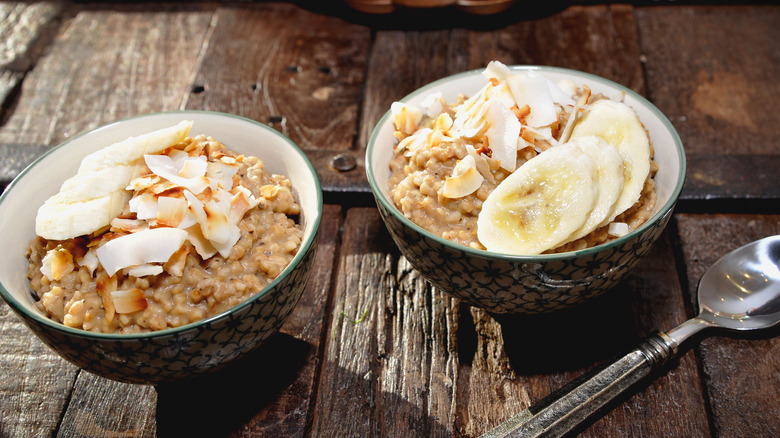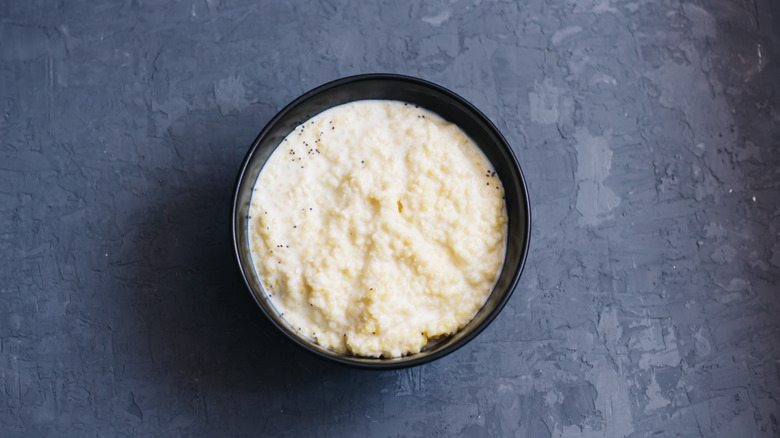The Real Reason Oats Are Associated With Glue
As we are all well aware, oats are an amazing grain. They are rich in fiber and proteins which are the perfect things to start your day with (via Healthline). Most of those who are gluten intolerant can dig into a bowl of pure, natural oats.
But oats weren't always as appreciated for their nutritional value as they are today. The History of Cereals explains that the oldest recorded evidence of oats proves that the grain has been around for at least four millennia, but early humans treated it like a weed. The rich cereal wasn't fully appreciated until it fell into the hands of the Scotts.
Later, in 1602, Scottish settlers sailed to Massachusetts and brought the grain with them (via Family Consumer Sciences). The oat was adopted by other settlers, becoming particularly popular in the north central and northeastern United States. Now, the United States and Canada produce more than half of the world's oat crops.
Some truth and some starch
Sometimes it all comes down to perception. If you are a regular oatmeal eater, odds are that you tried quite a few bowls of the grain before you figured out what and how you liked it. There are quite a few ways to eat oats from steel-cut to Scottish oats, or instant to overnight oats. There are options out there for everyone and the different ways oats are processed give them vastly different textures and flavors.
If you've ever warmed a bowl of overly-processed instant oatmeal, you may find it understandable why people associate the grain with glue. Oatmeal has a lot of starch in it, according to Healthfully. Starch contributes to the chewy glue texture oats can take on, notes The Kitchn.
Another reason people associate oats with glue is their intertwined histories. Authors G.A. Hareland and F.A. Manthey on Science Direct write about how oats, while also being an amazing food, have additional uses in skin care and adhesive products. Oats' starch content also allows them to be used for glue extenders. Because of oatmeal's glue-like texture, it is no surprise that the association has stuck.

